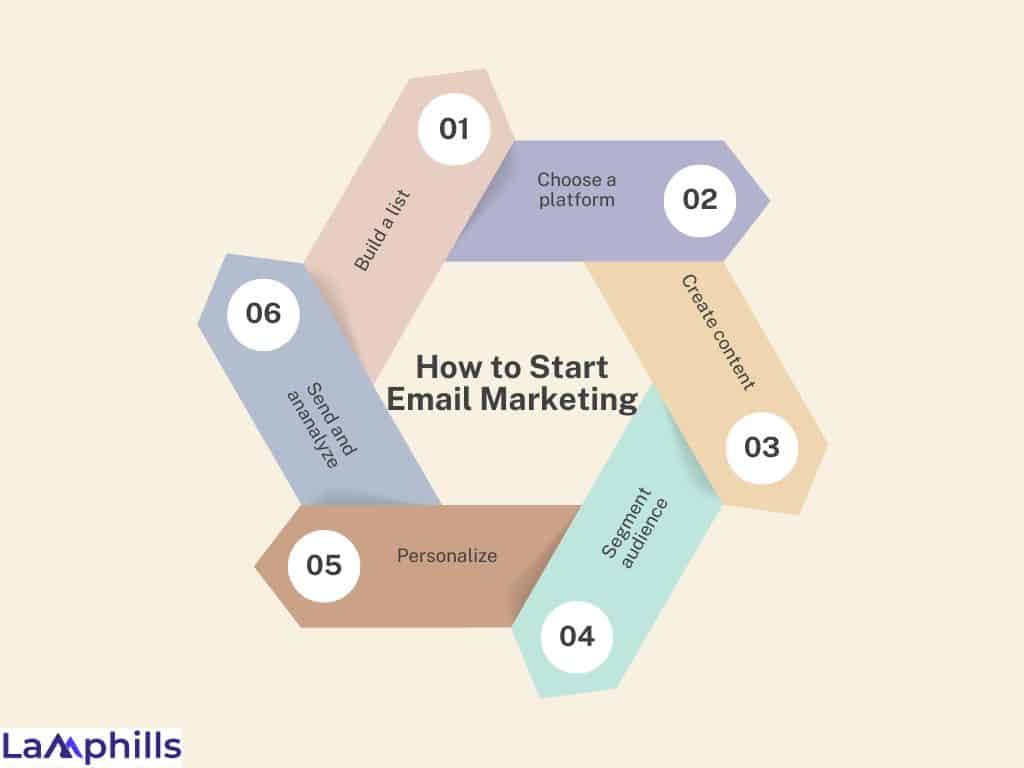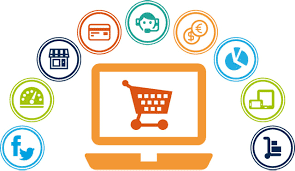Even in the context of constantly advancing technology in 2024, the fundamental method of using e-mail for business communication will still be considered successful. Despite the abundance of marketing platforms available, email marketing remains the most effective approach for anyone seeking to connect with their target audience, since it provides a direct and intimate connection to potential buyers. Whether introducing a new product, providing helpful content, or building clients’ loyalty, an excellent marketing email is essential for the further outcome. So the question is what is the step-by-step guide on “how to write a marketing email.”?
In this detailed guide, I will discuss all the details of writing a powerful marketing email. This post will help you know what email marketing is, the guidelines you should know, best practices, and samples to come up with the right email marketing.
Key Points
- E-mail marketing is still the best practice that will be efficient in reaching the target audience in 2024.
- Knowledge of the intended audience serves as a key when designing a marketing email including the act of listing and further categorizing the targets.
- Subject line best practices help maximize the open rate such as keeping sub-headers brief, keeping the tone urgent, using numbers and emojis, and avoiding banned words.
- The text’s content has to be interesting to the recipient. It has to grab the reader’s attention and offer something of value.
- E-mail marketing can be in the form of, newsletters, promotional e-mails, or transactional e-mails among others, and can easily reach a big market compared to the costs involved.
How to Write a Marketing Email
Email marketing is a subset of Internet marketing that involves creating and sending out messages to a group of people with the aim of marketing goods and services, passing information, or just enhancing a relationship. It is one of the best ways to reach out to your audience directly and the closeness of it that cannot be paralleled with other channels is charming.
Email marketing can take many different forms. Depending on the type of business, it can be as simple as a newsletter, transactional emails, promotional campaigns, or messages with specific objectives. Through the medium, firms can address a massive market at a comparatively cheap cost and have the advantage of segmenting the audience to address special appeals.
Now you know what a marketing email is and how it should be written, although there is always a place for the uniqueness that will make each marketing message distinct.
#Step 1: Understand Your Audience

Image source: Scatter
Knowing your audience or readers and what they are interested in should be well-understood before one begins to write. But if sending your message to the entire group of customers in your list is unproductive, you need to sort the list and segment it by demographics, activity, or interest so that the viewer will find the given information relevant.
Know Your Target Audience
One of the rules from the defined set is that when coming up with such a message, one has to be aware of audiences. The actual filters that can be appealing can be age, gender, location, and other related choices. Gen Z’s would undoubtedly like receiving an email, for instance, telling them that they are excited to buy a fresh inventory of products that are marketed as eco-friendly.
Segment Your Email List

The concept of segmentation assists in reducing the audiences into different segments which in turn means that messages can be targeted. In this respect, it can be done by example using factors like the customer’s buying history, the activity rate, or even the region. For instance, if you are a retailer you opt to peak some promotions such as ‘buy now’ to customers who make the usual orders while you use some promotions such as ‘get back’ to the customers who have not ordered for some time.
Personalize Your Emails
Certainly, your letter may contain parts that are somehow addressed to the recipient, but personalization is more than just calling someone by their name. On that, use the data you have before the campaign so that you can send relevant content to those subscribers. For example, if a customer recently made a purchase related to sports such as bats or balls, a possible email is advice on a new shoe for athletics.
#Step 2: Craft Compelling Subject Lines
The subject line constitutes the first impression the message recipients will get, and this defines their tendency to open the message. You must badger your subject line well enough to see high open rates.
Keep It Short and Catchy
The subject line should not be very long, it should be very short and clear. Keep it at 6-10 words or 50 characters or less if possible. For instance, “Save 20% This Week Only – For You!” is blunt and makes use of time sensitivity.
Create a Sense of Urgency
This may cause your recipients to take the intended action when opening the mail, hence increasing the open rates. Adding phrases like “You only have limited time left to make the purchase” or “Only a few units are in stock” does it. For instance, “Flash Sale: Thus, such headlines as “Limited Time Offer: Ends at Midnight!” elicit action.
Use Numbers and Emojis
Numbers can make your subject lines more appealing and present a specific expectation of what is inside. For example, a title such as “5 Tips on How to Have a Better Sleep” will be less noticeable than one that says “🎉 30% Off Today Only.”
Avoid Spammy Words
Layman terms such as ‘free’, ‘win’, or ‘get a guarantee’ are likely to ‘set off’ spam detectors. Instead, it is recommended to emphasize creating the message’s utility and explaining the benefits the recipient will get if he or she reads the email. For instance, rather than having ‘Free Gift Inside,’ you could try ‘Your Exclusive Gift is Here. ’
#Step 3: Create Engaging Content
After that, the content of the opened email has to attract the recipients’ attention. Your message should be simple to understand, brief, and, most importantly, should be what the audience would want to hear.
Start with a Strong Opening
The first line must be attention-grabbing and have to dictate the email’s subsequent lines. For example, “People will immediately pay attention when you say, “Some fantastic information we thought you would love.”
Provide Value to the Reader
The email’s content should if at all possible, offer the recipient something of value—for example, a toolkit, promotion, or instructive material. For instance, an email received from a travel agency might offer suggestions to take a summer holiday coupled with an offer of a one-way ticket at a concession rate.
Use Clear and Concise Language
It will be useful to eliminate any professional terms and to speak as simply as possible. Short sentences and paragraphs make it easy for your recipient to read the email contents. For instance, instead of using phrases like, “Implementing our products will help you increase operational efficiency,” you can reimagine it as “Our products allow you to get more done with less time. ”
Incorporate Visuals
Pictures, infographics, and promos also make your office email pop. However, it must be done in a way that the visuals should appropriately support the message being passed across instead of occupying the central stage. For example, a picture showing a woman’s face before using a certain beauty product and a picture of the same lady after using the product will appropriately capture the essence of the product.
#Step 4: Include a Strong Call-to-Action (CTA)
Your CTA is important because it summarizes what you expect your recipients to do as a result of receiving your emails. CTA should be obvious whether it’s a purchase or a lead generation where the join webinar or download resource is offered.
Check out my article How to Write the Best Google Ads Copy: Templates and Examples to see what I meant by strong CTA!
Make It Clear and Specific
Always prefer the use of clear action words that direct readers on what to do. For instance, “Shop Now” and “Download Your Free Guide” are simple and clear and, therefore, effective.
Create a Sense of Urgency
Prompting can add additional directions, for instance, to ensure that the prospective consumer takes quick action to enhance the variety of conversions. Words such as “Buy now and get free shipping,” or “Register today for a place” would compel readers to do something.

Highlight the Benefits
Explain to the reader what he or she stands to benefit from clicking on the CTA. For example, the headline ‘Get 20% Off Your First Order’ perfectly illustrates what the customer will gain if they complete a particular action.
Use Contrasting Colors
To ensure that the CTA button gets the reader’s attention, use a color that rhymes with the rest of the background color. For instance, if you add a blue or any other cool background to your message, a bold CTA button in red or orange will be noticeable.

How to Write a Marketing Email Example
Example: Promoting a New Product Launch
Subject Line:
“🚀 Check Out the Latest Product that We’ve Introduced – The First Look of the Inside Here!”
Email Body:
Hi [First Name],
This is about our new product, and it would be our pleasure if you are among the first that we inform you. Let me present to you the [Product Name], it is a product that will simplify your life and make it merrier.
Why You’ll Love It:
—Innovative Design: Clean and simple.
—Top-Notch Features: Fitted with all the modern technology as it can be.
—Exclusive Offer: Free shipping with every purchase you make today.
Making purchases online has never been easier and you could be missing out on this special offer. Please click the button below to find out more, and to make your purchase.
[Shop Now]
We literally cannot wait for you to have a taste of the [Product Name]. You are always welcome, have a nice day!
Best regards,
[Your Name][Your Company]
-P. S: You have 2 days to take advantage of this offer. Hurry Now! This offer expires in 48 hours.
Check out the video below by one of my all-time favorites Aurelius Tjin for more examples
How to Write a Marketing Email Sample
Sample: Nurturing Customer Relationships
Subject Line:
“🌟 Thank You for Being a Loyal Customer – A Special Gift Inside!”
Email Body:
Dear [First Name],
We want to say thank you for being a loyal customer. First of all, your support is very much appreciated and therefore, we want to thank you for it with a gift for you.
Happy New Year Sale! You Get a Gift for Your Next Order!
As our esteemed client, you are getting a free [Gift Item] with your next order. All you have to do is type in the code **THANKYOU** on the promotional box before you check out and you will be given the gift.
[Claim Your Gift]We appreciate your help and your contribution to our project. We wish to continue providing you with High-Quality products and appreciate your use of our services.
Warm regards,
[Your Name][Your Company]
P. S. We look forward to more upcoming and fascinating offers and information to be shared with you.
Creating a marketing email can be straightforward with a clear checklist. Here’s a step-by-step guide with bold headings and a simple checklist to help you craft an effective marketing email.
This checklist helps ensure that each step of your marketing email process is completed effectively. By following these guidelines, you can create engaging and successful marketing emails that connect with your audience and achieve your goals.
What is a Marketing Email with Example?
A marketing email is a clear message sent to potential or current customers to promote products, services, or brand awareness. For example, a company might send an email showcasing its new product launch with a call-to-action button to shop now.
How Do I Start Email Marketing?

- Build a list: Gather email addresses through sign-up forms.
- Choose a platform: Use services like Mailchimp or Constant Contact.
- Create content: Design emails with engaging content and visuals.
- Segment audience: Tailor emails to different audience groups.
- Send and analyze: Launch campaigns and track performance.
What Makes a Good Marketing Email?
A good marketing email is engaging and concise, with a clear subject line and call-to-action. It should also be personalized to the recipient and mobile-friendly to reach a broader audience.
What are the 5 Ts of Email Marketing?
The 5 T’s of email marketing are:
- Targeting: Send relevant emails to the right audience.
- Timing: Send emails at optimal times.
- Testing: Experiment with different elements to see what works best.
- Tracking: Monitor performance metrics.
- Tactics: Use strategies like personalization and segmentation.
How Long is an Ideal Marketing Email?
The ideal marketing email is typically between **50 to 125 words**, ensuring it’s quick to read and straight to the point.
Conclusion
We have come to the end of this article revealing how email marketing continues to be an effective means of engaging with your audience and overall business growth. Knowing your auditory, creating attention-grabbing headlines, and coming up with great content with powerful calls to action you will be able to write great marketing emails. Here are the examples and the steps to follow in 2024 and the subsequent years more effectively from this guide.
In summary, it’s critical to identify that email marketing actually means personalization and relevancy and that the job is to provide value. Keep up-to-date with the trends and move forward to tinker and enhance the emails in an attempt to yield the highest performance. However, with the right attitude and hard work, your email marketing organization can be a major boost to your business and customer retention.
Related Posts
- SEO Outreach Explained: A Beginner’s Guide to Getting Quality Backlinks
- How To Send a Press Release: Your Personal Guide to Making Waves in the Media
- 10 Top In-Demand Digital Marketing Skills You Should Know in 2024: Expert Insights
- 2024 Digital Marketing Trends: What You Need to Know






